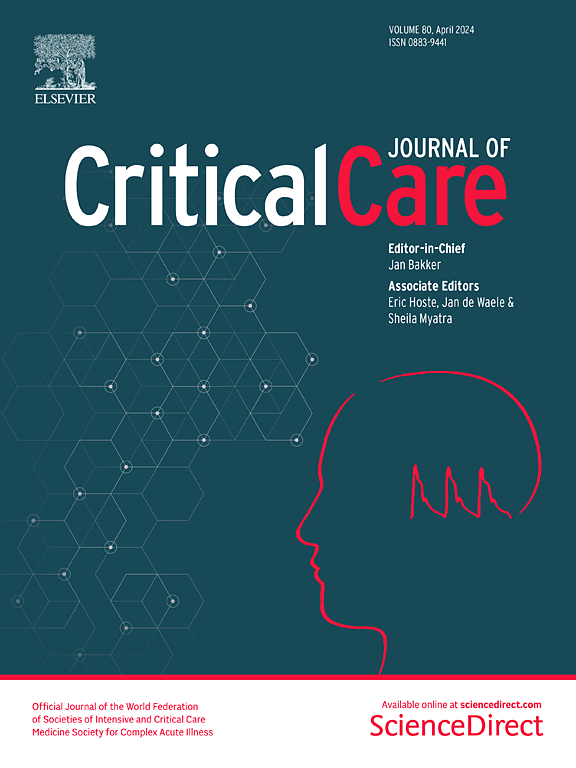Infusion of sodium DL-3-ß-hydroxybutyrate decreases cerebral injury biomarkers after resuscitation in experimental cardiac arrest
IF 8.8
1区 医学
Q1 CRITICAL CARE MEDICINE
引用次数: 0
Abstract
Cerebral complications after cardiac arrest (CA) remain a major problem worldwide. The aim was to test the effects of sodium-ß-hydroxybutyrate (SBHB) infusion on brain injury in a clinically relevant swine model of CA. CA was electrically induced in 20 adult swine. After 10 min, cardiopulmonary resuscitation was performed for 5 min. After return of spontaneous circulation (ROSC), the animals were randomly assigned to receive an infusion of balanced crystalloid (controls, n = 11) or SBHB (theoretical osmolarity 1189 mOsm/l, n = 8) for 12 h. Multimodal neurological and cardiovascular monitoring were implemented in all animals. Nineteen of the 20 animals achieved ROSC. Blood sodium concentrations, osmolarity and circulating KBs were higher in the treated animals than in the controls. SBHB infusion was associated with significantly lower plasma biomarkers of brain injury at 6 (glial fibrillary acid protein, GFAP and neuron specific enolase, NSE) and 12 h (neurofilament light chain, NFL, GFAP and NSE) compared to controls. The amplitude of the stereoelectroencephalograph (sEEG) increased in treated animals after ROSC compared to controls. Cerebral glucose uptake was lower in treated animals. In this experimental model, SBHB infusion after resuscitated CA was associated with reduced circulating markers of cerebral injury and increased sEEG amplitude.输注 DL-3-ß-hydroxybutyrate 钠可减少实验性心脏骤停患者复苏后的脑损伤生物标志物
心脏骤停(CA)后的脑部并发症仍然是世界范围内的一个主要问题。本研究旨在测试输注ß-羟基丁酸钠(SBHB)对临床相关的 CA 猪模型脑损伤的影响。对 20 头成年猪进行电诱导 CA。10 分钟后,进行心肺复苏 5 分钟。自发性循环恢复(ROSC)后,动物被随机分配接受平衡晶体液(对照组,n = 11)或 SBHB(理论渗透压 1189 mOsm/l,n = 8)输注 12 小时。20 只动物中有 19 只实现了 ROSC。接受治疗的动物的血钠浓度、渗透压和循环中的 KBs 均高于对照组。与对照组相比,输注 SBHB 在 6 小时(胶质纤维酸蛋白、GFAP 和神经元特异性烯醇化酶、NSE)和 12 小时(神经丝轻链、NFL、GFAP 和 NSE)脑损伤血浆生物标志物明显降低。与对照组相比,ROSC 后接受治疗的动物立体脑电图(sEEG)振幅增大。治疗动物的脑葡萄糖摄取量较低。在该实验模型中,CA复苏后输注SBHB与脑损伤循环标志物减少和sEEG振幅增加有关。
本文章由计算机程序翻译,如有差异,请以英文原文为准。
求助全文
约1分钟内获得全文
求助全文
来源期刊

Critical Care
医学-危重病医学
CiteScore
20.60
自引率
3.30%
发文量
348
审稿时长
1.5 months
期刊介绍:
Critical Care is an esteemed international medical journal that undergoes a rigorous peer-review process to maintain its high quality standards. Its primary objective is to enhance the healthcare services offered to critically ill patients. To achieve this, the journal focuses on gathering, exchanging, disseminating, and endorsing evidence-based information that is highly relevant to intensivists. By doing so, Critical Care seeks to provide a thorough and inclusive examination of the intensive care field.
 求助内容:
求助内容: 应助结果提醒方式:
应助结果提醒方式:


